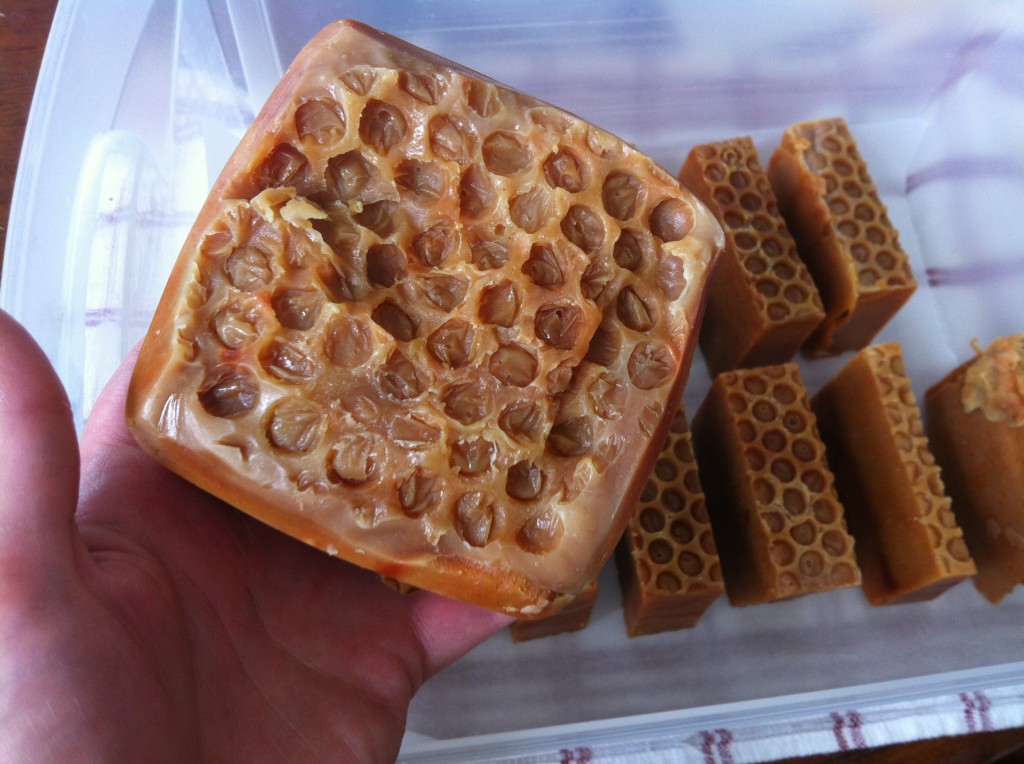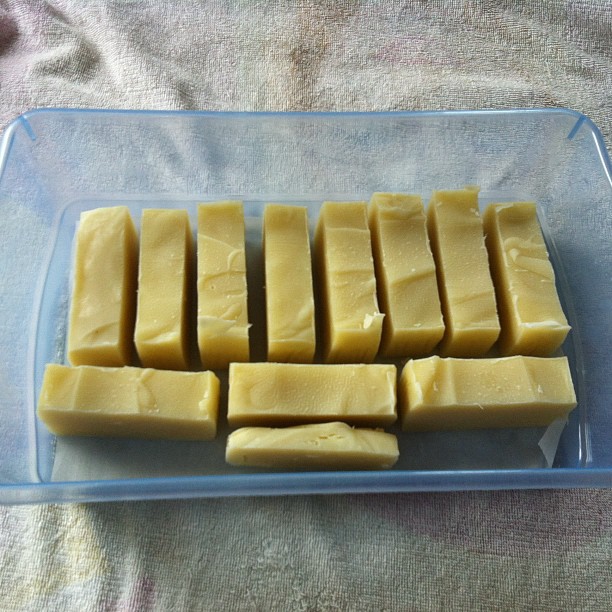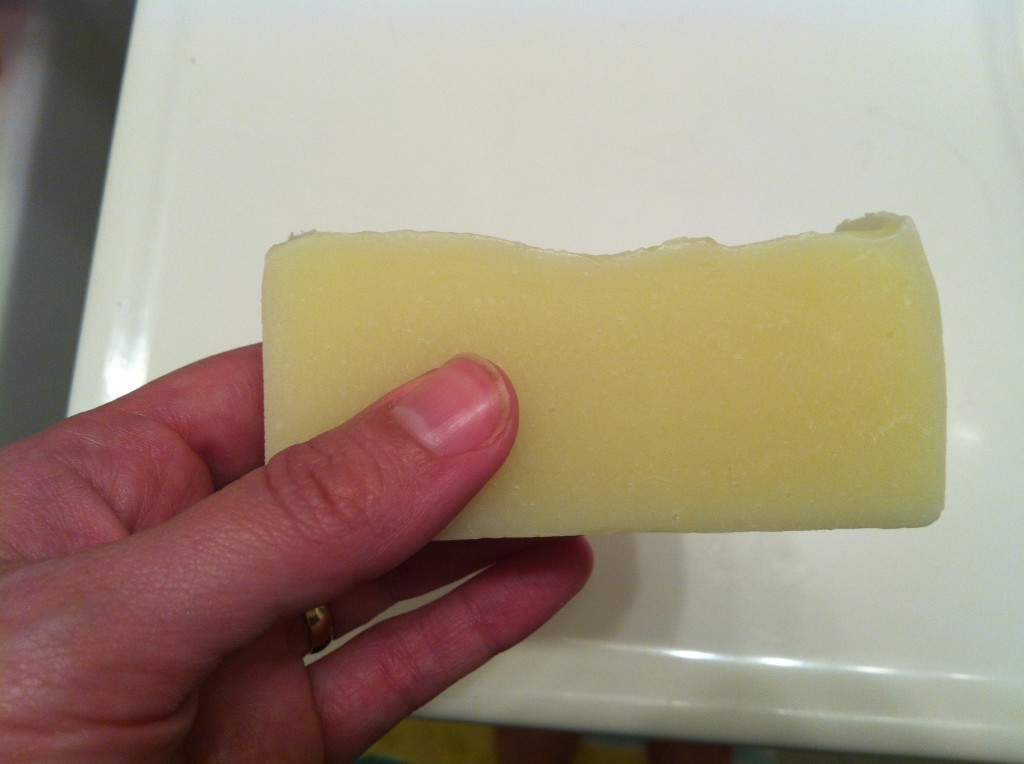This was my first personal recipe, and the soap turned out great!
Ingredients
- 19 oz. olive oil
- 14 oz. coconut oil
- 6 oz. palm oil
- 5 oz. shea butter
- 2 oz. grapeseed oil
- 2 oz. castor oil
- 1.35 oz. sweet orange essential oil
- 0.7 oz. cinnamon bark essential oil
- 3 T finely ground oats
- 1 T honey
- 16 oz. distilled water
- 7.2 oz. lye
First, I lay bubble wrap in the bottom of my mold so the soap would have a honeycomb appearance on the bottom. I wish I had lined the mold with parchment paper, too. Despite the fact that my mold’s manufacturer said lining was unnecessary, it was terrible trying to remove the soap from the mold. I had to pop it in the freezer for an hour, and even after that, I had to wedge it out with a knife, which kind of made my soap less pretty. Lesson learned. Always line!
I didn’t want to fiddle with the essential oils and oats when my soap was tracing, so I went ahead and measured them first, then combined them into one container and set them aside. I ground my oats with a coffee grinder, put them in another container, and set them aside. Then I went ahead an measured out the tablespoon of honey and set it aside, too.
I poured 16 oz. water into a container, set it aside, and carefully measured 7.2 oz. of lye into a new container. Then I slowly added the lye to the water, stirring all the while. I kept stirring until the liquid was clear. Then I stuck my thermometer into the lye so I could watch the temperature.
I know there are different schools of thought on warming oils. It was hot here in Massachusetts yesterday, so my coconut oil was already melted, but if it hadn’t been, I’d have melted it in the microwave. I did melt the shea butter in the microwave. Sue me. Despite the fact that I did not take care to make sure the oils were the same temperature as the lye, the soap turned out well.
I measured out my oils into different containers, then combined them into one big plastic bowl and kept stirring. A note for beginners like me: use a scale to measure everything. Don’t try to use a measuring cup and do it by volume. You could be a little off that way. I was a little worried that my shea butter was starting to solidify again while I waited for the lye to reach 100°F. I could see little tiny solid pieces, miniscule really, but I prayed and kept stirring. For all I know, that’s not a bad thing. I’m a newbie.
Once the lye reached 100°F, I carefully added it to the oil mixture and stirred for a few moments. Then I used my stick blender to speed up the process. At a light trace, I added the honey. I guess I should have diluted the honey. My finished soap had some brown spots.
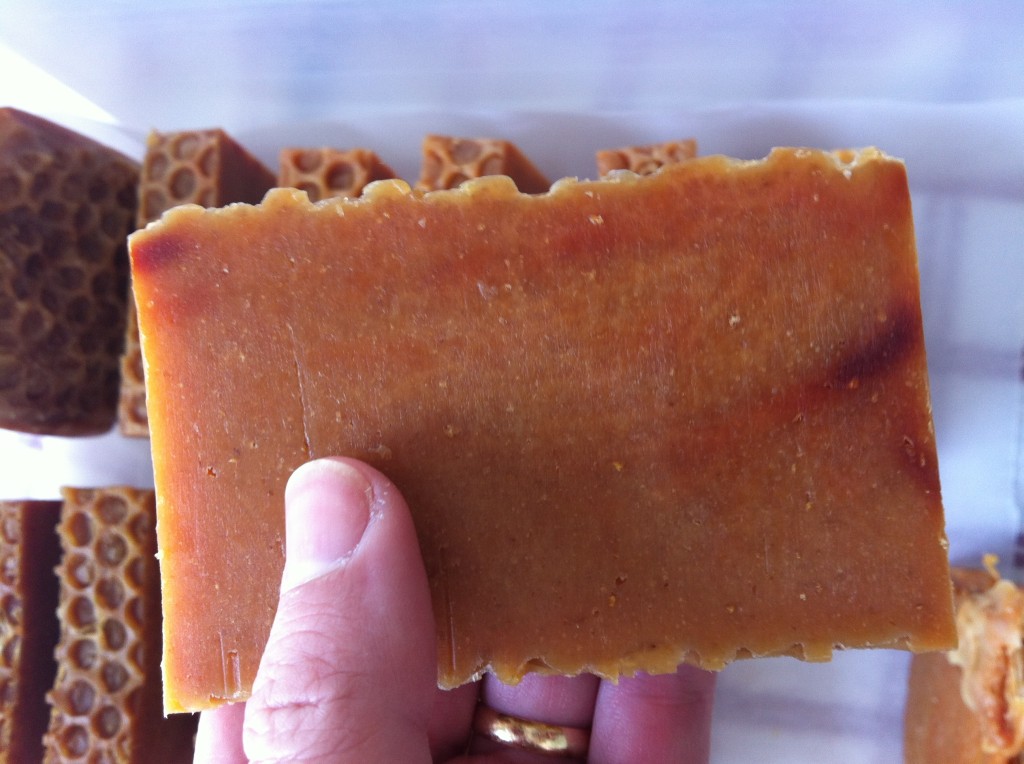
According to one online troubleshooter (dead link removed—sorry!), this can also happen when your soap goes through a very hot gel phase. Like mine did.
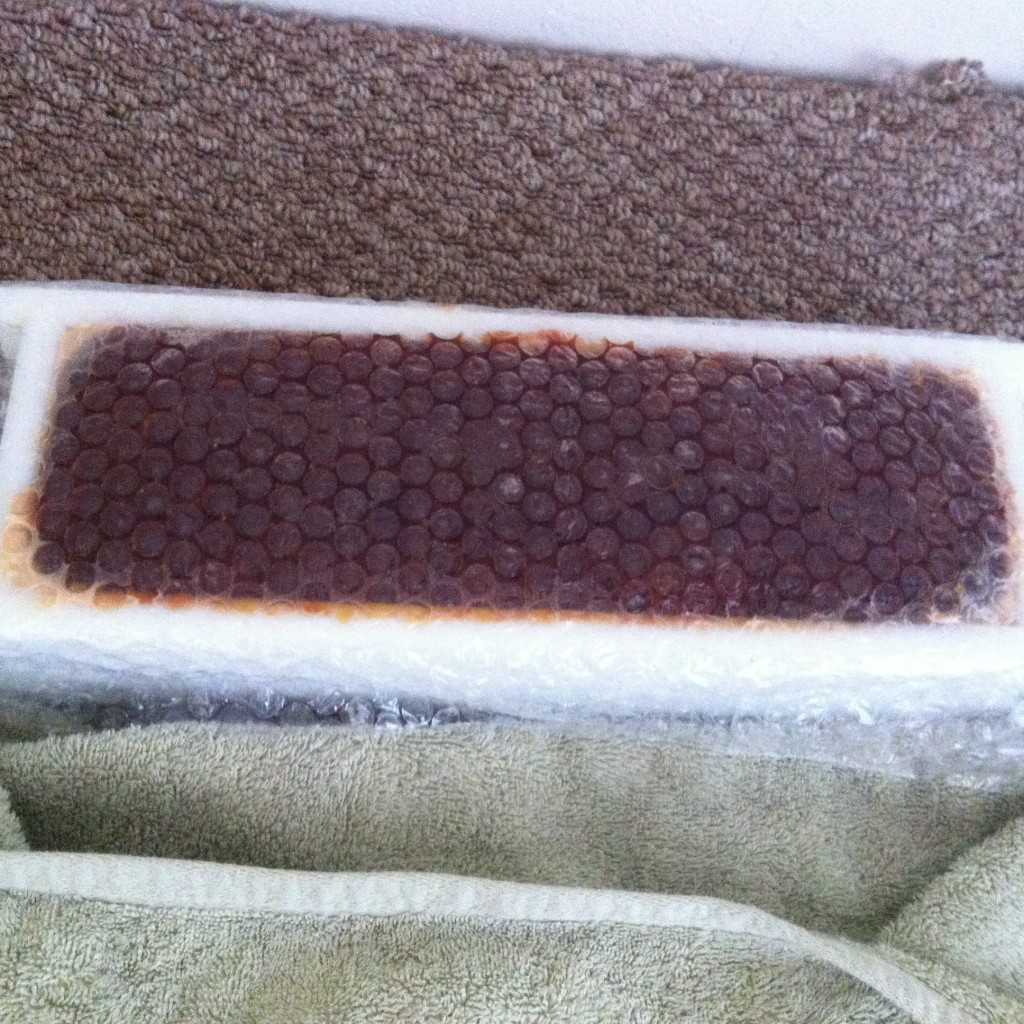
I had read that honey does funny things. Perhaps I didn’t need to cover the soap with a towel. However, I did read that the dark spots might go away once the soap is cured, and also that the soap is still fine to use. Whew! I think they sort of give it character.
At trace, I added the essential oils and ground oats and stirred thoroughly to mix everything in well. I covered the top with bubble wrap for the honeycomb effect, then put my soap to bed.
I actually made a mistake in my recipe. I added 20 oz. of olive oil instead of 19. I’m not sure what it did to my batch, aside from make more soap. I’ll have to wait and see if there were any unintended effects, but the soap looks just fine.
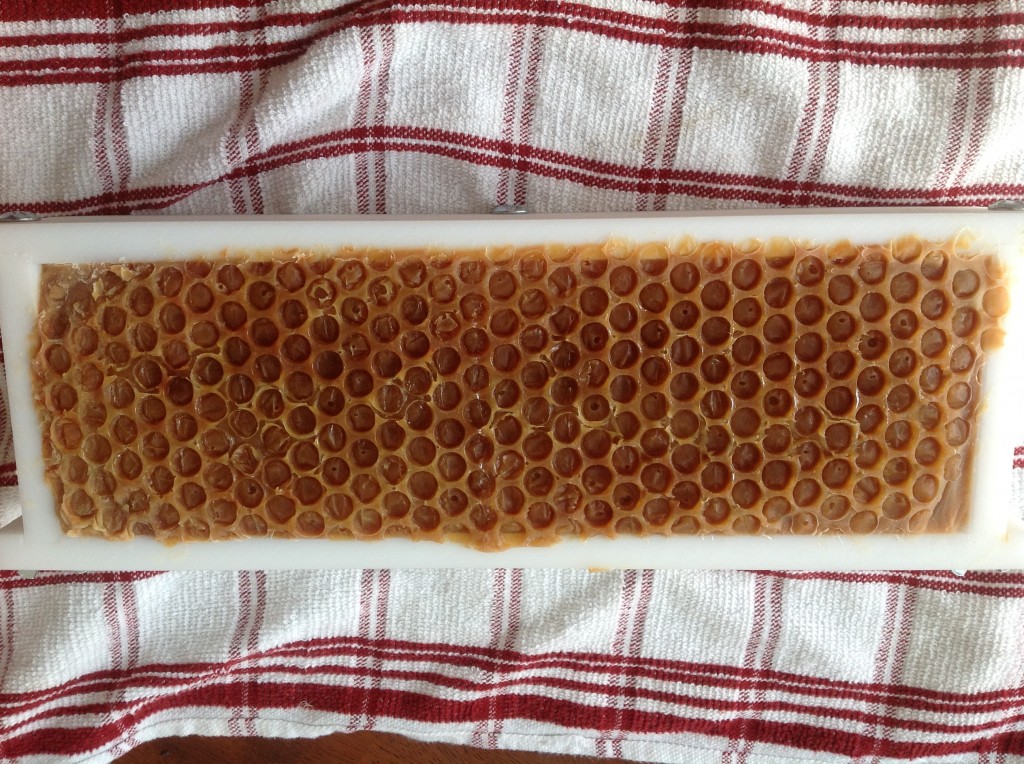
I have a mold that comes with a cutter, so once I finally wrestled my soap out of the mold, I sliced it into bars. They’re kind of quirky and not all the same size.
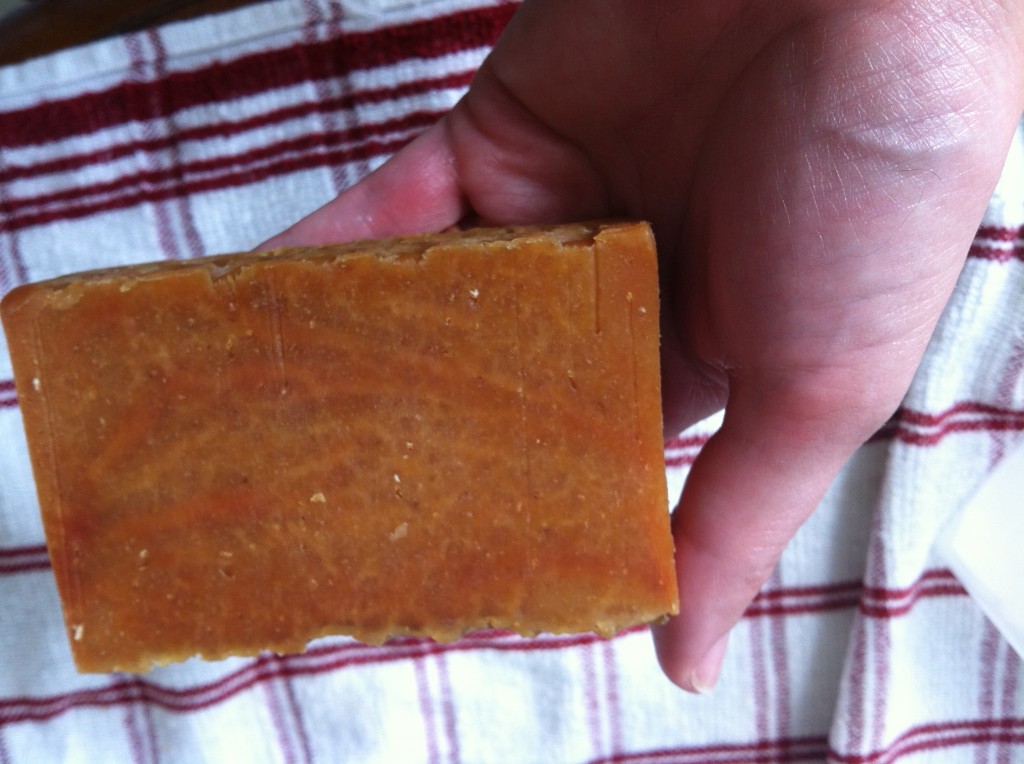
But like I said, I learned my lesson about the lining, which should prevent some of the odd looking bars next next time.
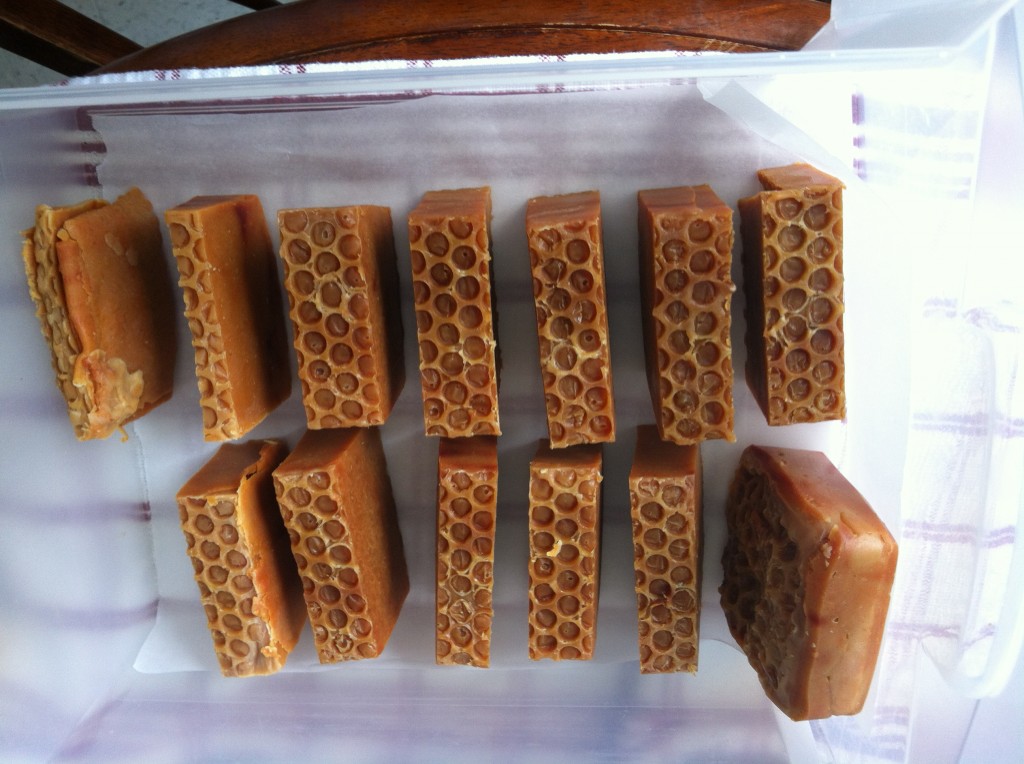
You’re probably wondering about that huge bar of soap on the far right. Right? It may be the result of adding the extra ounce of olive oil, or it could be that I’m a newbie and can’t figure out how much oil will make the exact right amount to fit my mold, but I had that much soap left over after my mold was full, so I poured into a plastic container, and put bubble wrap on it, too.
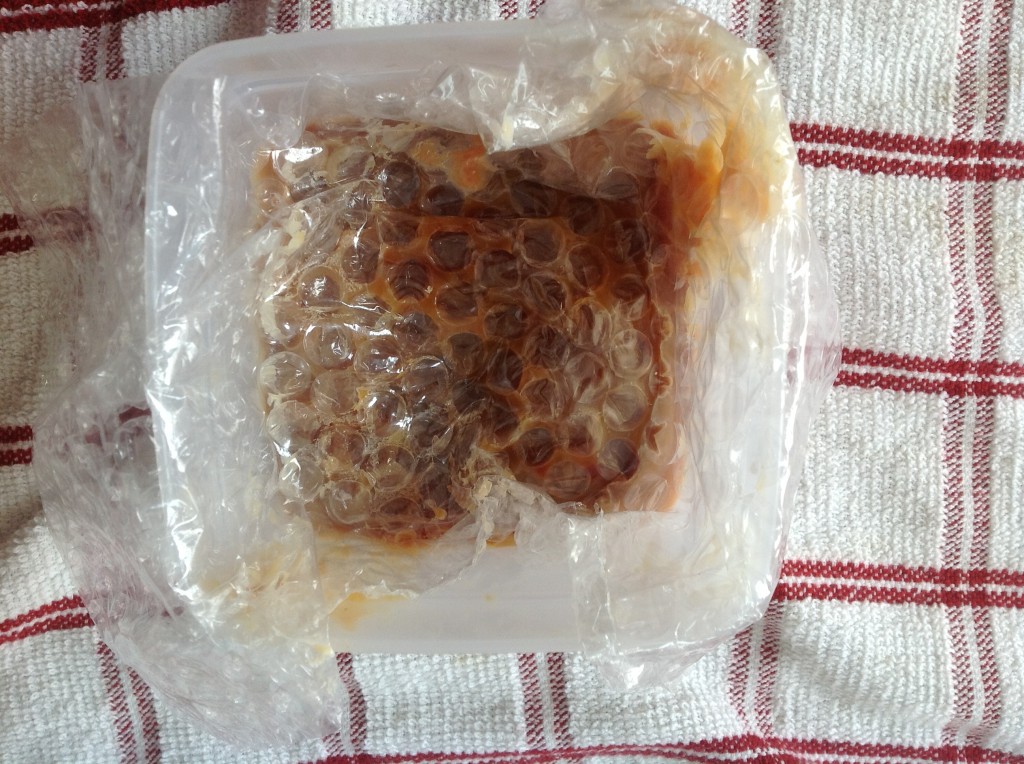
And it came out pretty well.
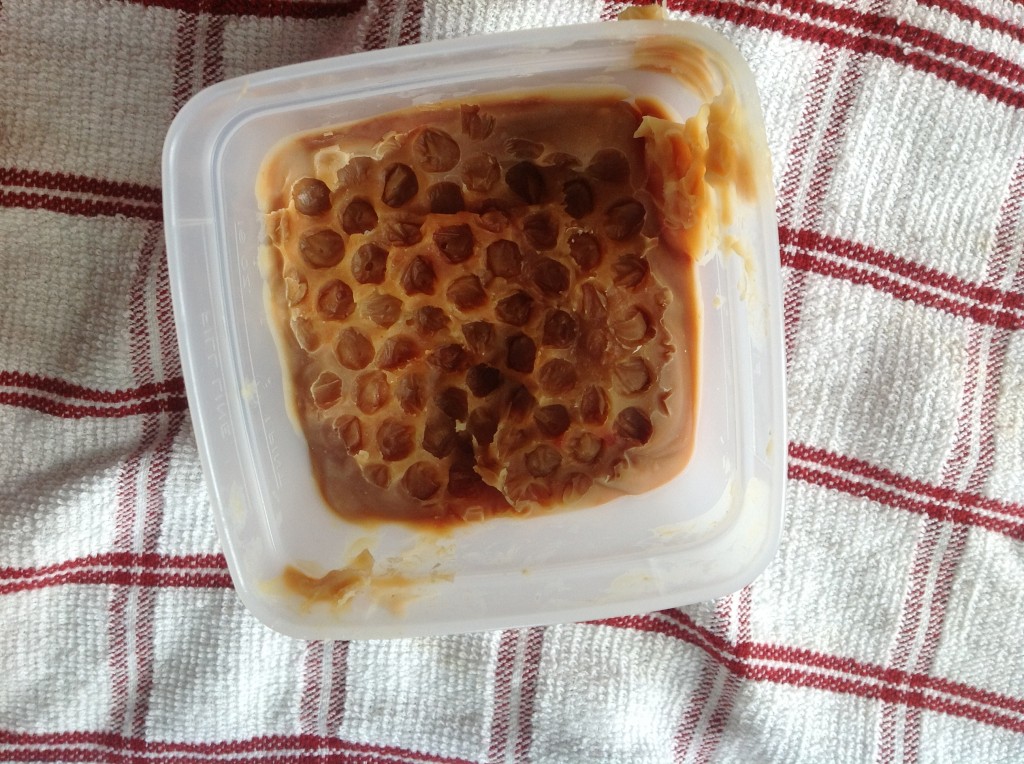
It was a little easier to get out of the mold, but it still gave up a little fight. I used a peeler to make it look a little nicer around the edges.
That is one huge bar of soap.
Still the honeycomb effect turned out well.
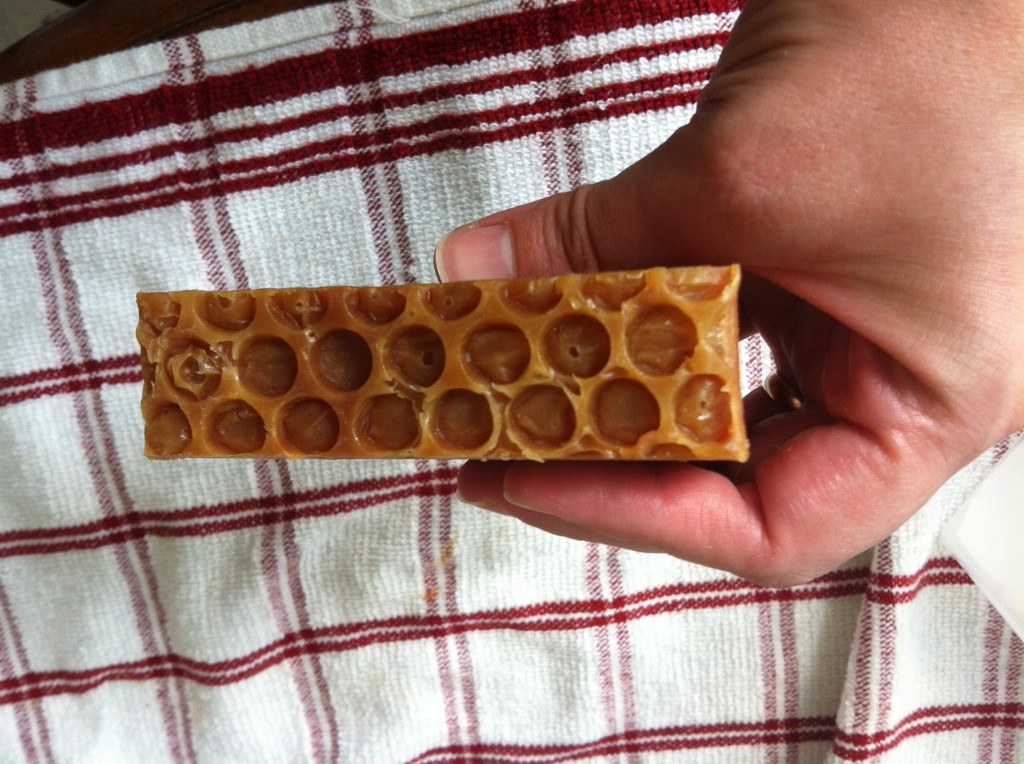
Overall, I’m very pleased with how the finished soap looks, despite the brown spots. I was working with honey, which can be kind of cranky, and I was using a recipe of my own, so who knew what would happen? It smells absolutely divine, by the way. The combination of the honey and essential oils is amazing.
By the way, this soap had an INS value of 155, which is close to Dr. Bob’s ideal of 160. So that’s good? I guess. Also, the calculator I used to create the recipe predicts the recipe will produce soap with a medium hard bar, very good cleansing, great conditioning, good foam, and average stable lather. I wasn’t sure whether to worry about lather stability over much or not.
Washing up my supplies told me that the soap lathers up really well and feels good on my hands. I can’t wait to use it.
Honey Cinnamon Oatmeal Soap by Dana Huff is licensed under a Creative Commons Attribution-NonCommercial 3.0 Unported License. Permissions beyond the scope of this license may be available at Suds Life: About.

